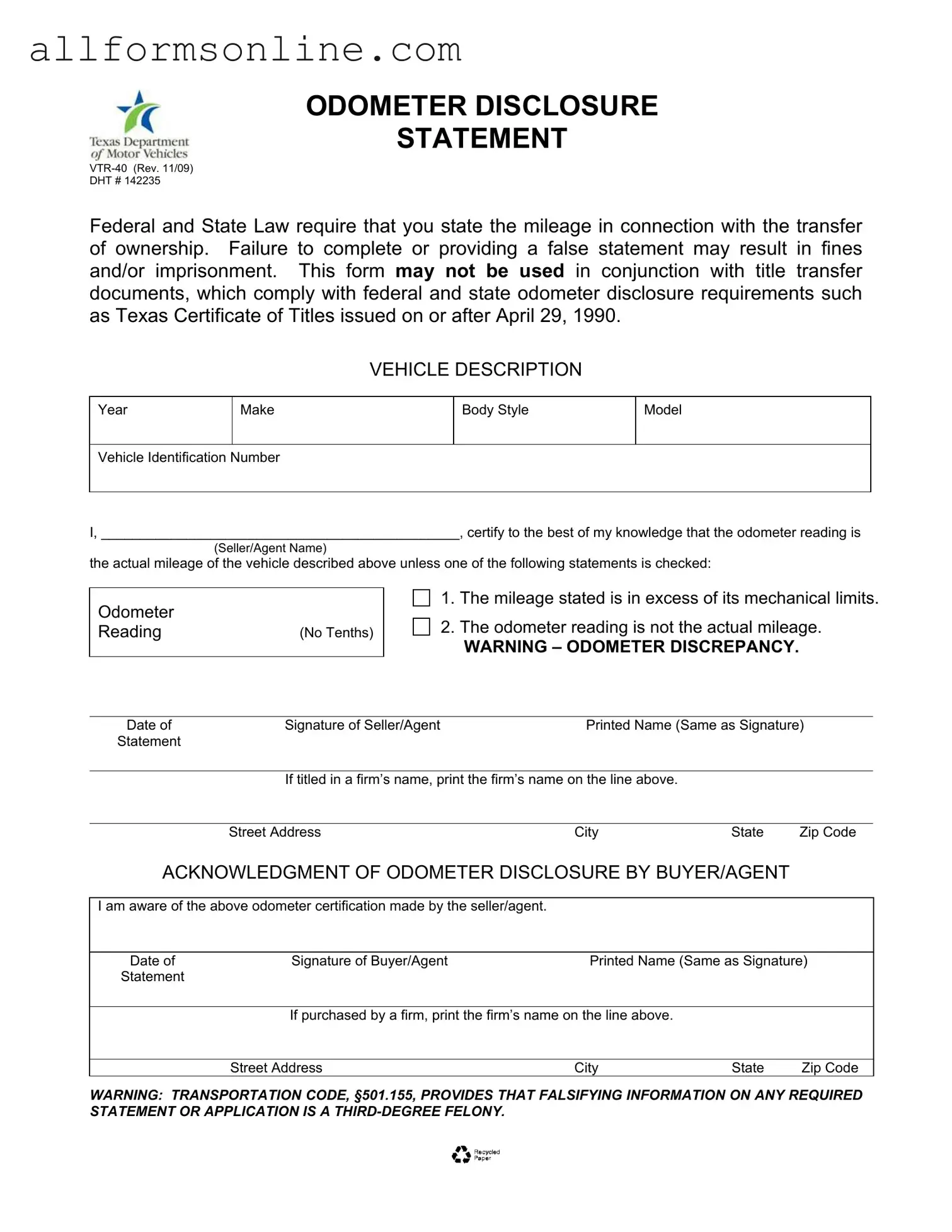What is the Texas Odometer Statement form?
The Texas Odometer Statement form, also known as VTR-40, is a document required by both federal and state law. It serves to disclose the vehicle's mileage at the time of ownership transfer. This form helps prevent fraud and ensures that buyers are aware of the actual mileage of the vehicle they are purchasing.
Who needs to fill out the Texas Odometer Statement?
Both the seller and the buyer (or their agents) must complete the Texas Odometer Statement during a vehicle sale. The seller certifies the accuracy of the odometer reading, while the buyer acknowledges this disclosure. This process is crucial for maintaining transparency in vehicle transactions.
When is the Texas Odometer Statement required?
This form is required whenever a vehicle's ownership is transferred. However, it cannot be used alongside title transfer documents that already meet federal and state odometer disclosure requirements, such as Texas Certificates of Title issued on or after April 29, 1990.
What happens if the Odometer Statement is not completed?
Failing to complete the Texas Odometer Statement can lead to serious consequences. Not only can it result in fines, but it may also lead to imprisonment. Both parties should ensure the form is accurately filled out to avoid potential legal issues.
What should I do if the odometer reading is not accurate?
If the odometer reading is not accurate, the seller must check the appropriate box on the form, indicating that the odometer reading is not the actual mileage. This ensures that the buyer is aware of any discrepancies and can make an informed decision.
What are the penalties for falsifying information on the Odometer Statement?
Falsifying information on the Texas Odometer Statement is considered a serious offense. According to Texas Transportation Code, this act can be classified as a third-degree felony, which carries significant legal repercussions. Honesty is crucial when filling out this form.
Can the Odometer Statement be used for vehicles with mechanical issues?
Yes, the Texas Odometer Statement can be used for vehicles with mechanical issues. If the mileage exceeds the mechanical limits of the odometer, the seller should indicate this on the form. This provides clarity and protects both parties in the transaction.
How do I complete the Texas Odometer Statement?
To complete the Texas Odometer Statement, both the seller and buyer must fill in their names, addresses, and signatures. The seller must provide the vehicle's details, including the make, model, year, and Vehicle Identification Number (VIN), along with the current odometer reading. Afterward, the buyer must sign to acknowledge the odometer disclosure.
